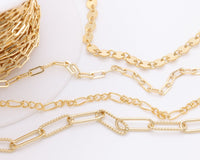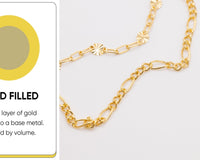The Hamsa hand, with its eye-catching design, has captured the fascination of people across cultures for centuries. This ancient symbol, steeped in history and meaning, has a rich and diverse background that continues to resonate with many to this day. In this blog post, we'll explore the history and profound significance of the Hamsa hand.
The Origins of the Hamsa Hand
The Hamsa hand, also known as the Hand of Fatima or the Hand of Miriam, has deep roots in various cultures and religions, primarily the Middle East and North Africa. Its origins can be traced back thousands of years, making it a symbol with a long and enduring history.
Middle Eastern and Islamic Traditions
In Islamic tradition, the Hamsa hand is often called the Hand of Fatima. Fatima was the daughter of the Prophet Muhammad, and her hand is believed to symbolize protection and blessings. The five fingers of the Hamsa hand are said to represent the Five Pillars of Islam, emphasizing the hand's significance in guiding one's faith.
Jewish Symbolism
In Jewish culture, the Hamsa hand is known as the Hand of Miriam, representing protection against the evil eye. Miriam, the sister of Moses and Aaron, is a revered figure in Judaism. The Hamsa is frequently worn as jewelry or a charm, displayed in homes, or used as an amulet to ward off negative energy and bring good fortune.
Ancient Egypt
The Hamsa hand also has roots in ancient Egyptian culture, where it is associated with the goddess Isis. In this context, the hand symbolizes the concepts of protection, power, and strength, and it was often used to promote healing and well-being.

The Symbolism and Meaning of the Hamsa Hand
The Hamsa hand is a symbol laden with layers of meaning and significance:
1. Protection: Across various cultures, the Hamsa hand is primarily known for its protective properties. It is believed to guard against evil spirits, negative energy, and the envious gaze of others.
2. Blessings: The fingers of the Hamsa hand are often interpreted as representing the five senses and the five elements, symbolizing balance and harmony in one's life.
3. Faith: In Islamic tradition, the Hamsa hand is a symbol of faith, guiding believers in their spiritual journey and reminding them of their religious obligations.
4. Feminine Energy: The Hamsa hand is frequently associated with feminine energy and is seen as a symbol of strength and nurturing power.
5. Universal Symbol: Over time, the Hamsa hand has transcended its cultural origins to become a universal symbol of protection and well-being, appealing to people from all walks of life.
SHOP
Wholesale Hamsa Hand Charms

Contemporary Usage
In the modern world, the Hamsa hand has found a global audience. It is commonly worn as jewelry, hung as a decoration in homes, and incorporated into various forms of art and design. Beyond its aesthetic appeal, the Hamsa hand continues to serve as a reminder of the importance of protection, spirituality, and the power of ancient symbolism.
The Hamsa hand, with its rich history and deep symbolism, remains a compelling and meaningful symbol that resonates with people from diverse backgrounds. Whether worn as an amulet or displayed as art, the Hamsa hand serves as a powerful reminder of the enduring human fascination with protection, spirituality, and the interconnectedness of cultures across time.
Common Questions and Answers:
-
Is the Hamsa hand religious?
- While the Hamsa hand is used in various religious contexts, it is more a cultural symbol than a strictly religious one. In Islam, it's known as the Hand of Fatima, while in Judaism, it's referred to as the Hand of Miriam. It transcends religious boundaries and is widely recognized as a symbol of protection and good fortune.
-
Can anyone wear or display the Hamsa hand?
- Yes, the Hamsa hand is embraced by people of various cultural and religious backgrounds. It is considered a universal symbol of protection, and many people wear it as jewelry or display it in their homes, regardless of their religious beliefs. Shop Hamsa Hand Charms
-
Does the direction the Hamsa hand faces have any significance?
- Yes, it can. When the Hamsa hand is facing down, it is believed to invite good fortune and abundance into one’s life. When facing up, it is thought to be a powerful symbol of protection against negative energies.
-
Are there different designs of the Hamsa hand?
- Absolutely. The basic design of the Hamsa hand is a palm with five fingers, but it often incorporates various patterns, symbols, and even gemstones. The eye in the center is a common feature, but not a necessary one. Designs can vary greatly depending on cultural influence and artistic interpretation.
-
How is the Hamsa hand used in jewelry?
- The Hamsa hand is a popular motif in bracelets, necklaces, earrings, and rings. It's often made from a variety of materials, including gold, silver, and pewter. Some jewelry designs are quite ornate, incorporating gemstones and intricate detailing. Shop Hamsa Hand Charms
-
What is the significance of the eye in the center of the Hamsa hand?
- The eye in the center of the Hamsa hand is traditionally believed to reflect the evil eye back to the person who casts it, providing protection to the wearer or the household where it is displayed.
-
Can the Hamsa hand bring luck?
- Many people believe that the Hamsa hand can bring good luck, happiness, and prosperity, in addition to offering protection from harm.



















